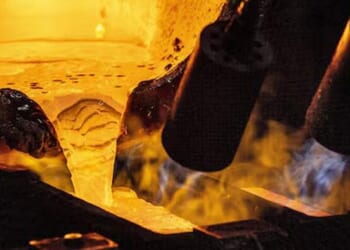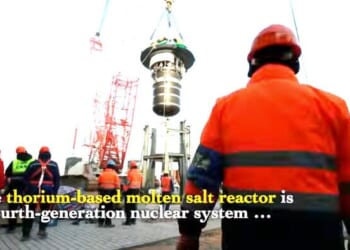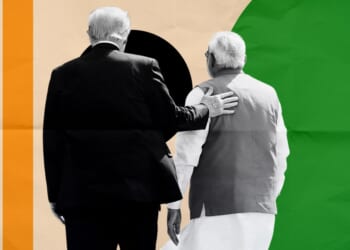Just a few days ago I stated that Trump is targeting Venezuela under the pretext of countering drug trafficking. But the real reasons for this are clear:
Venzuela is, as Politico points out, not known for drug trafficking. It does not have ‘cocaine facilities’. But it does have the largest oil reserves in the world. That has always made it a target for a U.S. regime-change operations.
But Venezuela is also a huge country double the size of Iraq with a mountainous and often densely wooded countryside. The U.S. military is unable to invade, occupy and control it.
But what the U.S. might want to try in Venezuela is a variant of the Israeli plan for Iran.
A decapitation strike killing President Maduro and the military leadership accompanied by a bombing campaign to take out air defenses and primary defense units. Meanwhile the CIA and special forces will have to work on the ground in Caracas to organize local thugs for an assault on the main government sites and radio/TV buildings.
A few days ago the U.S. ordered the aircraft carrier USS Gerald R. Ford to move from the Mediterranean towards Venezuela. The carrier is expected to arrive in early to mid November. I had expected that the U.S. would wait with any attack on Venezuela until the carrier force is in place. Until than it would continue its intimidation strikes on random fishermen at sea.
The Wall Street Journal though says that the U.S. is already ready to strike on land:
U.S. Eyes Striking Venezuelan Military Targets Used for Drug Trafficking (archived) – WSJ
The Trump administration has identified targets in Venezuela that include military facilities used to smuggle drugs, according to U.S. officials familiar with the matter. If President Trump decides to move forward with airstrikes, they said, the targets would send a clear message to Venezuelan leader Nicolás Maduro that it is time to step down.
While the president hasn’t made a final decision on ordering land strikes, the officials said a potential air campaign would focus on targets that sit at the nexus of the drug gangs and the Maduro regime.
…
The potential targets under consideration include ports and airports controlled by the military that are allegedly used to traffic drugs, including naval facilities and airstrips, according to one of the officials.
The Miami Herald says that the decision to attack Venezuela has been made and that strikes are imminent:
U.S. poised to strike military targets in Venezuela in escalation against Maduro regime – Miami Herald
The Trump Administration has made the decision to attack military installations inside Venezuela and the strikes could come at any moment, sources with knowledge of the situation told the Miami Herald, as the U.S. prepares to initiate the next stage of its campaign against the Soles drug cartel.
The planned attacks, also reported by the Wall Street Journal, will seek to destroy military installations used by the drug-trafficking organization the U.S. says is headed by Venezuelan strongman Nicolás Maduro and run by top members of his regime.
…
Sources told the Herald that the targets — which could be struck by air in a matter of days or even hours — also aim to decapitate the cartel’s hierarchy.
The attack will follow the usual U.S. war pattern. The first part will be a SEAD campaign. The Suppression of Enemy Air Defenses will target cocaine producing radar installations, fentanyl smuggling S-300 air defense missiles and the ‘cartel’ command and control elements that direct the Venezuelan army’s defenses.
This will mostly be done by launching sea based Tomahawk cruise missiles and long range aerial bombing.
After the SEAD campaign has disabled or destroyed the air defenses the next part of the campaign will attempt to “decapitate the” government’s “hierarchy”.
The part may include more missile strikes but could also be done by special forces within a ground raids campaign and additional CIA controlled local elements.
According to the WSJ the Trump government intends to create a military rebellion against the Venezuelan government.
That though is likely to fail:
U.S. officials now and in Trump’s first term have applied pressure in the hope of provoking a barracks rebellion or an uprising, though the military has stood with Maduro and there have been no reports of protests in Venezuela. The show of American force now, though, is different.
…
If airstrikes don’t force Maduro out of power, they could potentially pressure his inner circle to turn against him, analysts say. However, such a strategy carries tremendous risks and could potentially backfire if troops rally around the flag and put up a fight. Many analysts who have closely tracked Venezuela also say the indictments against Maduro and his top aides underscore for him how costly it would be to leave power, as they could end up facing prosecution.
The military of Venezuela is, as far as it is known, not opposed to the government under President Nicolás Maduro. It is unlikely to bite the hands that feed it and to do the bidding of those who try to bomb it to smithereens.
The plan the Trump administration follows does have a starting point and an aim. But what seems to be missing are several crucial steps in between.
- Bomb the shit out of Venezuela
- ???
- ???
- ???
- Welcome a U.S. friendly regime!
- Profits!
Even if the Venezuelan military revolts against Maduro, which is highly unlikely, it is not clear how this could lead to the installation of the U.S. selected replacement Maria Corina Machado and her gang. Wouldn’t the military rather hang on to power by itself?
And what will the U.S. do if the military of Venezuela decides to hit back?
Venezuela has some 20 Su-30MK2V multi-role fighter airplanes with Russian Kh-31 anti-ship missiles. It also has Iranian-built Peykaap-III (Zolfaghar-class) fast attack craft equipped with CM-90 Anti-Ship Missiles (ASCM) supplied by Iran.
It is quite conceivable that the Venezuelan Navy will by successful in hitting a handful of U.S. ships. What will Trump’s next step be if that were to happen?
This article was originally published on Moon of Alabama.












